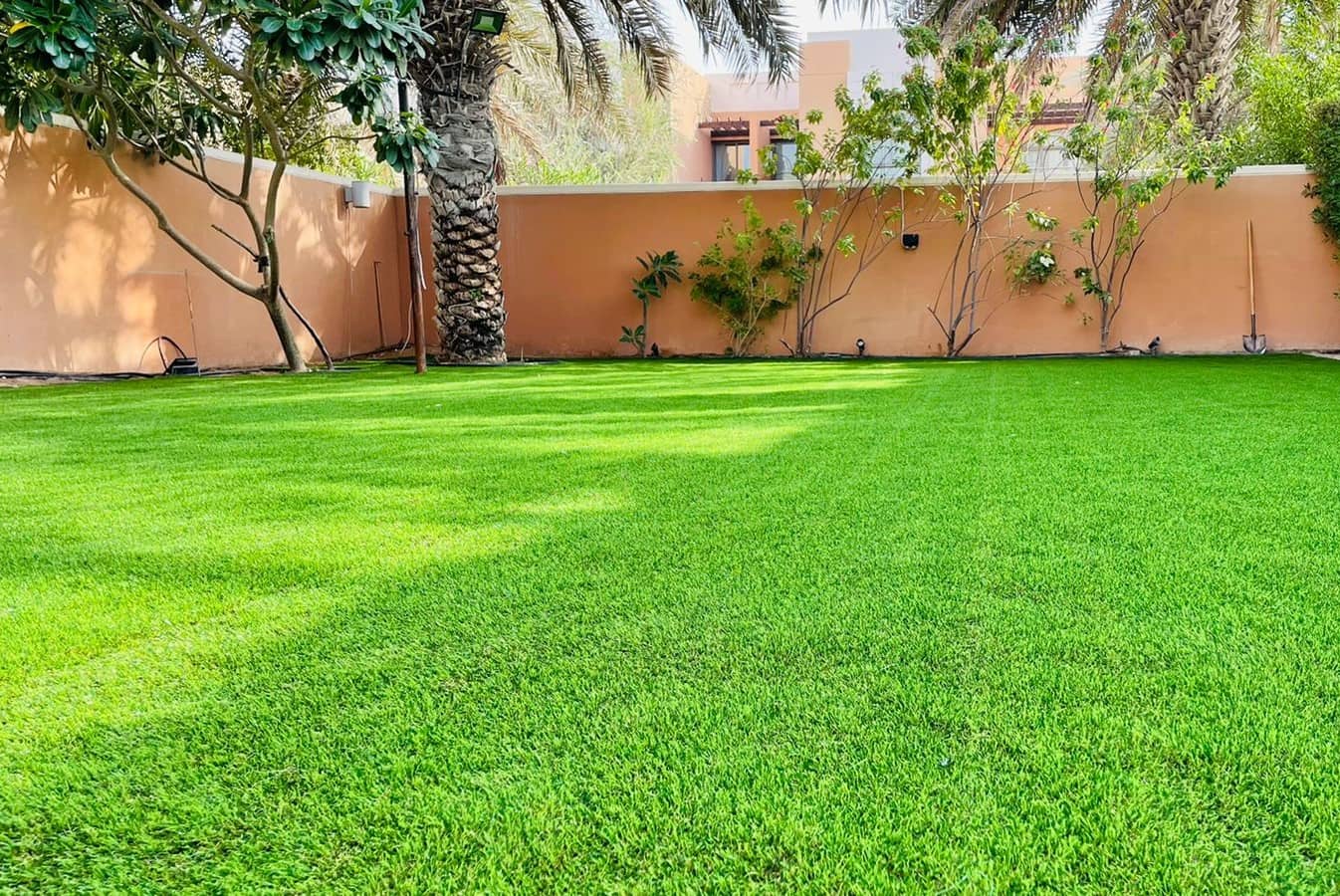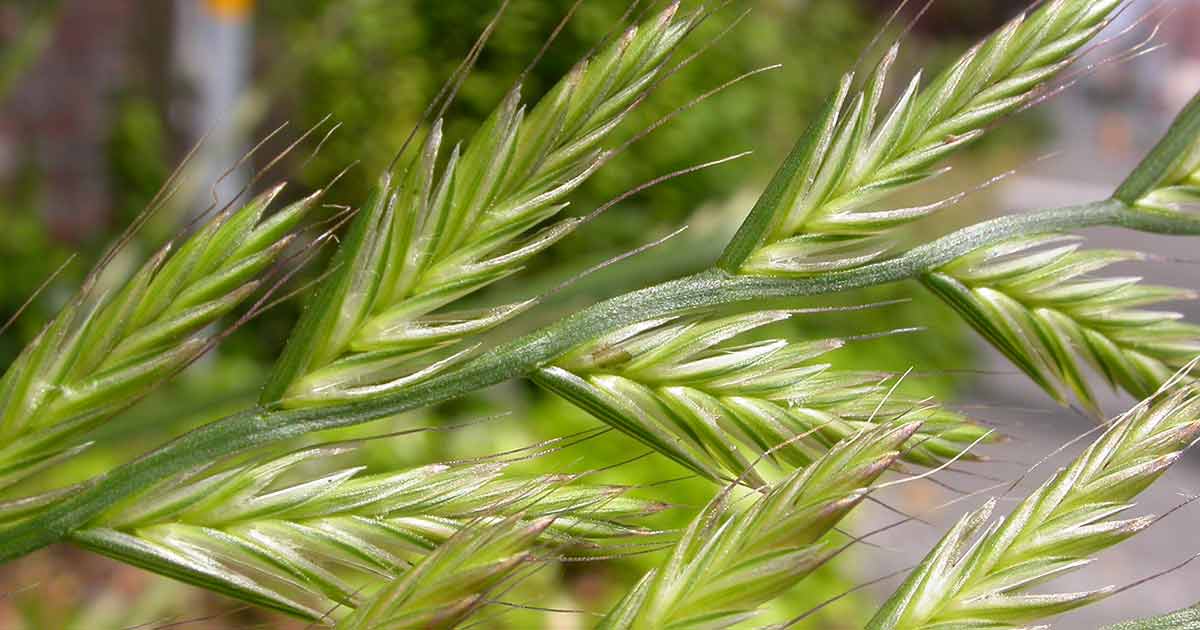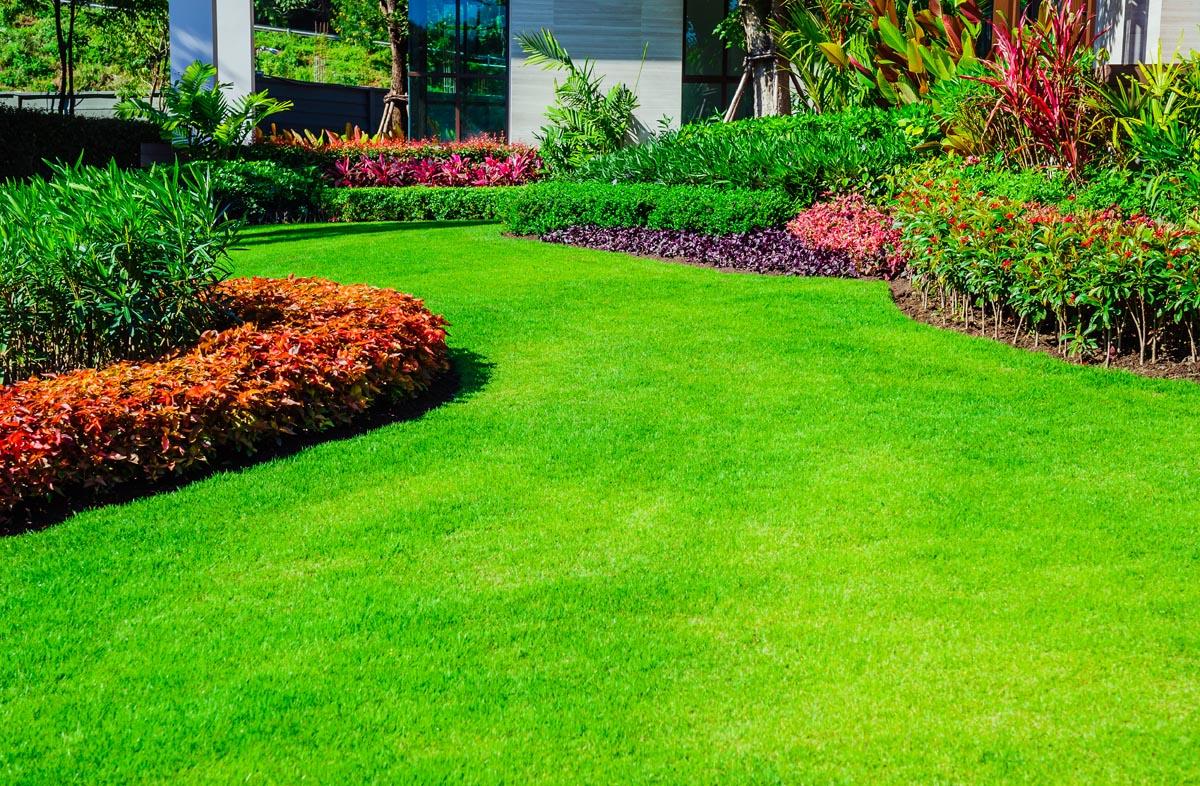Home>Gardening & Outdoor>Landscaping Ideas>What Type Of Grass To Have In Texas


Landscaping Ideas
What Type Of Grass To Have In Texas
Modified: February 18, 2024
Discover the best grass types for Texas landscaping with our expert guide. Find the perfect match for your lawn and create a stunning outdoor space.
(Many of the links in this article redirect to a specific reviewed product. Your purchase of these products through affiliate links helps to generate commission for Storables.com, at no extra cost. Learn more)
Introduction
Welcome to the Lone Star State, where the vast and diverse landscapes of Texas offer an array of options for creating stunning lawns. When it comes to choosing the right type of grass for your Texas lawn, several factors come into play, including the climate, soil type, and the specific region in which you reside. Understanding the unique characteristics of different grass species is key to achieving a lush, vibrant lawn that can withstand the often-challenging Texas climate.
In this comprehensive guide, we will explore the various types of grasses that thrive in Texas, considering both warm-season and cool-season varieties, as well as native grasses that are well-suited to the local environment. Additionally, we will provide insights into the best grasses for different regions of Texas and offer valuable maintenance tips to help you keep your lawn looking its best year-round. Whether you’re a proud resident of the Panhandle, the Gulf Coast, or the Hill Country, this guide will help you make informed decisions about the most suitable grass for your Texas lawn.
So, let’s embark on a journey through the verdant world of Texas grasses and discover the perfect fit for your outdoor oasis.
Key Takeaways:
- Choose the right grass for your Texas lawn by considering climate, soil, and maintenance needs. From heat-tolerant Bermudagrass to eco-friendly native options, there’s a perfect fit for every region.
- Maintain a vibrant Texas lawn with proper watering, mowing, fertilization, and pest control. Understanding your grass species and local conditions is key to nurturing a resilient, lush outdoor oasis.
Read more: How To Tell What Type Of Grass You Have
Factors to Consider When Choosing Grass
When selecting the right type of grass for your Texas lawn, several crucial factors should guide your decision-making process. By carefully considering these elements, you can ensure that your chosen grass variety will thrive in the specific conditions of your region and provide you with a lush, resilient lawn.
- Climate: Texas is known for its varied climate, encompassing arid deserts, humid coastal areas, and temperate zones. It’s essential to choose a grass species that can tolerate the heat, drought, and occasional cold snaps that characterize the Texas climate.
- Soil Type: The soil composition in Texas ranges from sandy to clay-based, and everything in between. Different grass species have specific soil preferences, so understanding your soil type is crucial for selecting a grass variety that will thrive in your lawn.
- Water Requirements: Given the sporadic rainfall patterns in Texas, it’s important to consider the water needs of different grass types. Choosing a grass variety that is drought-resistant can help conserve water and reduce maintenance efforts.
- Maintenance Level: Consider the amount of time and effort you’re willing to invest in lawn maintenance. Some grasses require regular mowing, fertilization, and pest control, while others are more low-maintenance.
- Usage: Think about how you plan to use your lawn. Will it be a play area for kids and pets, or primarily a visual enhancement to your property? Certain grass species are better suited to heavy foot traffic, while others excel in ornamental settings.
- Local Regulations: Be aware of any local water restrictions or homeowner association guidelines that may impact your choice of grass. Some regions have specific requirements for lawn types to conserve water and maintain environmental sustainability.
By taking these factors into account, you can narrow down the options and identify the grass varieties that are best suited to your specific circumstances. Whether you’re aiming for a resilient, low-maintenance lawn or a lush, manicured expanse of greenery, understanding these considerations will empower you to make an informed decision when choosing the perfect grass for your Texas landscape.
Warm-Season Grasses
For the hot and often dry climate of Texas, warm-season grasses are the top choice for many homeowners. These grasses thrive in the intense heat of summer and go dormant during the cooler months, making them well-suited to the climate patterns of the state. Here are some popular warm-season grasses that are ideal for Texas lawns:
- Bermudagrass: Known for its exceptional heat tolerance and rapid growth, Bermudagrass is a popular choice for Texas lawns. It forms a dense, lush carpet of fine-textured grass and is highly resilient to foot traffic, making it suitable for high-activity areas.
- Zoysiagrass: Zoysiagrass is prized for its drought tolerance and dense, attractive growth. It thrives in the hot and humid conditions of Texas and requires minimal water once established, making it an excellent choice for water-conscious homeowners.
- Buffalograss: As a native grass to the Great Plains, Buffalograss is well-adapted to the Texas climate. It is known for its low water requirements and minimal maintenance, making it an eco-friendly and sustainable option for lawns.
- Centipedegrass: With its low maintenance needs and natural resistance to pests and diseases, Centipedegrass is a popular choice for Texas lawns. It thrives in the acidic soils commonly found in the eastern and southern parts of the state.
These warm-season grasses are valued for their ability to withstand the heat and aridity of Texas, providing homeowners with vibrant, resilient lawns throughout the summer months. Their adaptability to the state’s climate and their capacity to conserve water make them highly desirable options for creating beautiful outdoor spaces.
Cool-Season Grasses
While warm-season grasses dominate the Texas landscape, there are regions of the state, particularly in the northern areas, where cool-season grasses thrive during the milder months of the year. These grasses offer lush, green lawns during the cooler seasons and can complement warm-season varieties to create year-round beauty. Here are some popular cool-season grasses that are well-suited to certain parts of Texas:
- Tall Fescue: Known for its durability and ability to thrive in the transitional climate zones of Texas, Tall Fescue is a popular cool-season grass. It exhibits excellent heat tolerance and can maintain its vibrant green color during periods of drought.
- Kentucky Bluegrass: This cold-tolerant grass species can thrive in the cooler regions of Texas, providing a dense, lush lawn with a fine texture and attractive color. It requires adequate moisture and is well-suited to areas with more moderate temperatures.
- Fine Fescue: With its shade tolerance and low maintenance requirements, Fine Fescue is an excellent choice for cooler, shadier areas of Texas. It offers a fine-textured appearance and can enhance the aesthetic appeal of lawns in northern regions.
While cool-season grasses are not as prevalent in Texas as their warm-season counterparts, they play a valuable role in providing greenery during the cooler months and diversifying the options for lawn care. By understanding the unique characteristics of these grasses, homeowners in cooler regions of Texas can create vibrant, resilient lawns that thrive throughout the year.
Native Grasses
Native grasses offer a compelling choice for Texas homeowners seeking environmentally sustainable and low-maintenance lawn options. These grasses have evolved to thrive in the local climate and soil conditions, making them well-suited to the diverse landscapes of the state. By incorporating native grasses into their lawns, homeowners can contribute to the preservation of Texas’ natural ecosystems while enjoying the benefits of hardy, resilient grass varieties. Here are some notable native grasses that are well-suited to Texas:
- Indiangrass: This warm-season, perennial bunchgrass is native to the central and eastern regions of Texas. It offers excellent drought tolerance and can thrive in a range of soil types, making it an attractive option for sustainable landscaping.
- Sideoats Grama: As the state grass of Texas, Sideoats Grama is a warm-season, perennial grass that provides both ornamental beauty and ecological value. It is well-adapted to the dry, rocky soils of Texas and supports local wildlife, making it a popular choice for native landscaping.
- Big Bluestem: This tall, warm-season grass is native to the central and eastern parts of Texas. With its impressive height and ornamental appeal, Big Bluestem adds visual interest to landscapes while offering resilience and adaptability to local environmental conditions.
- Eastern Gamagrass: Native to the eastern regions of Texas, Eastern Gamagrass is a warm-season, perennial grass that excels in wetland and riparian areas. It provides erosion control and habitat for wildlife, making it a valuable addition to sustainable landscaping projects.
By incorporating native grasses into their lawns, Texas homeowners can create environmentally friendly and visually captivating landscapes that celebrate the natural beauty of the state. These grasses not only require minimal maintenance but also contribute to the preservation of local ecosystems and support biodiversity, making them a compelling choice for sustainable and aesthetically pleasing landscaping.
Read more: How To Find Out What Type Of Grass You Have
Best Grasses for Different Regions of Texas
The diverse climate and terrain of Texas create distinct regional environments that influence the suitability of various grass species. Understanding the best grasses for different regions of Texas is essential for homeowners seeking to establish vibrant, resilient lawns that thrive in their specific local conditions. Let’s explore the most suitable grasses for different regions of the state:
Panhandle and High Plains
The Panhandle and High Plains regions of Texas experience extreme temperature variations and low precipitation, making drought-resistant grasses essential. Buffalograss and Bermudagrass are well-suited to these areas, offering exceptional heat tolerance and minimal water requirements while thriving in the region’s arid climate.
Gulf Coast
The humid, subtropical climate of the Gulf Coast region calls for grasses that can withstand high humidity and occasional flooding. St. Augustinegrass and Zoysiagrass are popular choices in this area, offering lush, dense growth and excellent tolerance to the region’s moisture levels and occasional salt exposure.
Central Texas and Hill Country
The rocky terrain and hot, dry summers of Central Texas and the Hill Country require grasses that can withstand heat and thrive in well-drained soils. Bermudagrass and Zoysiagrass are well-suited to these conditions, providing robust growth and resilience in the face of the region’s challenging climate and soil types.
Read more: What Grass Grows Best In Texas
East Texas
The humid, subtropical climate of East Texas calls for grasses that can thrive in moist, acidic soils and provide lush, green lawns. St. Augustinegrass and Centipedegrass are popular choices in this region, offering vibrant growth and natural resistance to the pests and diseases commonly found in the area.
West Texas
The arid, desert-like conditions of West Texas require grasses that can withstand extreme heat and minimal water availability. Buffalograss and Bermudagrass are well-suited to this region, offering exceptional drought tolerance and the ability to thrive in the harsh, dry climate of West Texas.
By selecting grass species that are well-adapted to the specific climate and soil conditions of their region, homeowners can establish resilient, visually appealing lawns that enhance the natural beauty of Texas while requiring minimal maintenance and resources.
Maintenance Tips for Texas Grasses
Maintaining a healthy, vibrant lawn in Texas requires a combination of proper care, attention to local conditions, and strategic maintenance practices. By following these maintenance tips, homeowners can ensure that their chosen grass species thrives in the often-challenging Texas climate, providing a lush and resilient outdoor space for relaxation and recreation.
Watering
Watering is crucial for Texas lawns, especially during the hot, dry summer months. To promote deep root growth and drought resistance, it’s best to water the lawn deeply but infrequently. Early morning is the optimal time for watering, as it allows the grass to absorb moisture before the heat of the day.
Read more: What Is The Best Grass Seed For North Texas
Mowing
Regular mowing is essential for maintaining healthy grass in Texas. It’s important to adjust the mowing height based on the grass species and the local climate. For warm-season grasses, a slightly higher mowing height can promote deeper root growth and shade the soil, reducing water evaporation. Cool-season grasses may require a lower mowing height to maintain an attractive appearance.
Fertilization
Fertilizing the lawn is key to providing essential nutrients for healthy growth. Understanding the specific nutrient requirements of the chosen grass species and the soil composition is crucial for effective fertilization. In Texas, it’s beneficial to use slow-release fertilizers that provide a steady supply of nutrients over time, promoting sustained growth and resilience.
Weed Control
Effective weed control is essential for maintaining a pristine lawn in Texas. Regular monitoring and targeted weed management practices can prevent invasive species from undermining the health and appearance of the grass. It’s important to choose weed control products that are specifically formulated for the grass species in the lawn and follow application guidelines carefully.
Aeration
Aerating the lawn can alleviate soil compaction and promote better air, water, and nutrient penetration to the grass roots. For Texas lawns, especially those with clay soils, annual or biennial aeration can enhance the overall health and resilience of the grass, particularly in high-traffic areas.
Pest and Disease Management
Regular inspection for pests and diseases is crucial for preventing damage to Texas lawns. Understanding the common pests and diseases affecting the chosen grass species and implementing proactive management strategies can safeguard the health and vitality of the lawn, minimizing the need for reactive treatments.
By adhering to these maintenance tips and tailoring them to the specific requirements of the chosen grass species and the local environment, homeowners can cultivate lush, resilient lawns that enhance the beauty of their outdoor spaces and provide a welcoming environment for outdoor activities and relaxation.
Conclusion
Choosing the right type of grass for your Texas lawn is a decision that significantly impacts the beauty, resilience, and sustainability of your outdoor space. By considering the diverse factors that influence grass selection, including climate, soil type, and regional considerations, homeowners can make informed choices that result in vibrant, thriving lawns that enhance the natural beauty of the Lone Star State.
From the resilient warmth of Bermudagrass to the lush appeal of St. Augustinegrass, Texas offers a rich tapestry of grass species suited to its varied landscapes and climates. Whether you reside in the arid expanses of West Texas, the humid embrace of the Gulf Coast, or the rugged terrain of the Hill Country, there is a grass variety perfectly tailored to your local conditions.
By embracing native grasses, homeowners can not only create visually captivating landscapes but also contribute to the preservation of Texas’ unique ecosystems, supporting biodiversity and sustainability. Additionally, understanding the maintenance needs of your chosen grass species is essential for nurturing a healthy, resilient lawn that withstands the challenges of the Texas climate.
As you embark on the journey of selecting and caring for your Texas lawn, remember that each grass variety has its own unique characteristics and maintenance requirements. By leveraging the insights and tips provided in this guide, you can cultivate a vibrant, resilient lawn that thrives in the dynamic and diverse environment of Texas, providing a welcoming outdoor oasis for relaxation, recreation, and natural beauty.
So, whether you opt for the heat-tolerant allure of Bermudagrass, the eco-friendly charm of native grasses, or the lush elegance of St. Augustinegrass, your Texas lawn has the potential to become a stunning centerpiece of your property, enriching your outdoor experiences and celebrating the enduring allure of the Lone Star State.
Frequently Asked Questions about What Type Of Grass To Have In Texas
Was this page helpful?
At Storables.com, we guarantee accurate and reliable information. Our content, validated by Expert Board Contributors, is crafted following stringent Editorial Policies. We're committed to providing you with well-researched, expert-backed insights for all your informational needs.












0 thoughts on “What Type Of Grass To Have In Texas”